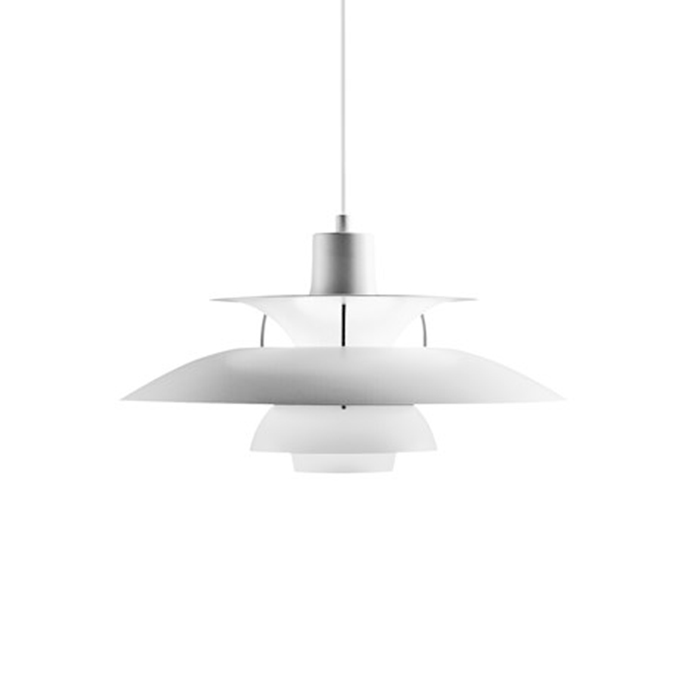
Poul Henningsen developed the PH 5 Pendant Light in 1958 as a classic new product of Louis Poulsen that eventually became synonymous with the PH brand. To mark the 50th anniversary of the PH 5 in 2008, the PH 50 (a high-gloss version in five new colors) was introduced. This fixture is part of the three shade system developed by Poul Henningsen in 1925-1926. In this system, the metal shades are painted to ensure comfortable, uniform light distribution that is mainly directed downwards. Henningsen sought to create glare-free lighting and aim the light to where it most needed while creating soft shadows. The pendants were produced in a number of formats and colors with the undersides of shades painted white or gold to provide diffused lighting, and illuminate itself.
Poul Henningsen was born in Copenhagen by the famous Danish actress Agnes Henningsen. He never graduated as an architect, but studied at The Technical School at Frederiksberg, Denmark from 1911-14, and then at Technical College in Copenhagen from 1914-17.
He started practicing traditional functionalistic architecture, but over the years his professional interests changed to focus mainly on lighting which is what he is most famous for. He also expanded his field of occupation into areas of writing, becoming a journalist and an author. For a short period at the beginning of WWII, he was the head architect of the Tivoli Gardens in Copenhagen. But like many other creative people, he was forced to flee Denmark during the German occupation but soon became a vital part of the Danish colony of artists living in Sweden.
His lifelong collaboration with Louis Poulsen began in 1925 and lasted until his death. To this day, Louis Poulsen still benefits from his genius. Poul Henningsen was also the first editor of the company magazine “NYT”. The CEO of Louis Poulsen at the time, Sophus Kaastrup-Olsen, gave the magazine to PH as a gift because he had been terminated from the Danish newspaper he worked for (his opinions were too radical).
Poul Henningsen's pioneering work concerning the relations between light structures, shadows, glare, and color reproduction—compared to man’s need for light remains the fondation of the lighting theories still practiced by Louis Poulsen.